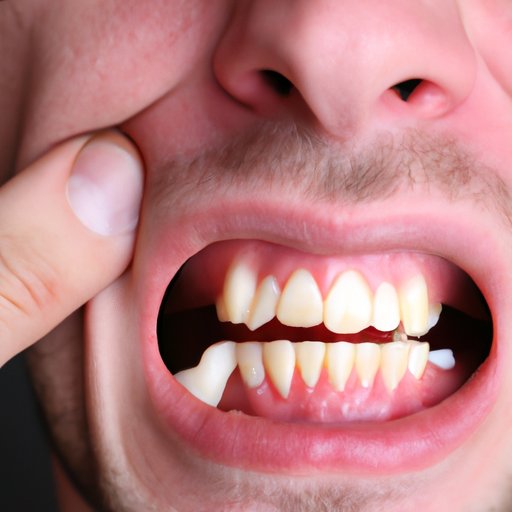
Introduction
Have you recently had a tooth extraction and are now experiencing pain that is getting worse instead of better? It is possible that you are suffering from dry socket, a condition that can occur after a tooth extraction. Understanding the symptoms and causes of dry socket is important to ensure proper treatment, alleviate pain, and prevent further complications.
Symptoms of Dry Socket
The most common symptom of dry socket is severe pain that typically begins two to four days after a tooth extraction. The pain may be constant or intermittent and may radiate to other areas of the head, neck, or ear.
Another common symptom is a bad odor or taste in the mouth. This is caused by a buildup of bacteria and debris in the extraction site, as the blood clot that forms after the extraction is disrupted or dislodged.
In some cases, visible bone may be present in the extraction area. This occurs when the blood clot that forms after the extraction is lost, exposing the underlying tissues.
Other possible symptoms include swollen lymph nodes in the neck, a low-grade fever, and difficulty opening the mouth.
Causes of Dry Socket
Several factors can increase the risk of developing dry socket after a tooth extraction. The most common is the extraction itself. The formation of a blood clot in the socket is necessary for proper healing, but if the clot is dislodged or dissolved before the socket has had a chance to heal, dry socket can occur.
Tobacco use, especially cigarette smoking, has been identified as a significant risk factor for dry socket. The chemicals in cigarette smoke can slow down healing and increase the risk of infection.
Poor oral hygiene can also increase the risk of dry socket. Bacteria and debris left in the extraction site can lead to infection and inflammation.
Other potential causes of dry socket include a history of radiation therapy in the head or neck, taking oral contraceptives, and a history of previous dry socket or multiple extractions.
At-risk Groups
Some individuals are at higher risk of developing dry socket than others. Elderly individuals and smokers are particularly at risk, as are people who have had multiple extractions or have a history of dry socket. Women who are taking oral contraceptives may also be at increased risk.
Preventative Measures
There are several habits and practices that can help reduce the risk of developing dry socket. Rinsing the mouth with warm salt water can help keep the extraction site clean and promote healing. Avoiding tobacco products is also important, as is maintaining good oral hygiene.
Other preventative measures include avoiding drinking through a straw, as the suction can dislodge the blood clot, and avoiding hot and spicy foods, which can irritate the extraction site.
Treatment Options
If you suspect you have dry socket, it is important to seek treatment. Over-the-counter pain medication, such as ibuprofen or acetaminophen, can help alleviate discomfort.
In some cases, your dentist or oral surgeon may recommend placing gauze in the extraction site to help protect it and promote healing. This is typically changed every day or two until the extraction site has begun to heal.
Other possible treatments include irrigation of the socket with antimicrobial solutions or packing the socket with medicated paste.
Expert Advice
If you are experiencing symptoms of dry socket, it is important to seek advice from your dentist or oral surgeon. They can recommend specific treatments and provide advice on ways to prevent dry socket from occurring in the first place.
Some tips for preventing dry socket include avoiding smoking or using tobacco products, maintaining good oral hygiene, and following your dentist’s post-extraction instructions.
Frequently Asked Questions
Q: How long does dry socket take to heal?
A: The healing time for dry socket varies depending on the severity of the condition. In most cases, it takes about seven days for symptoms to start improving, and up to two weeks for the socket to fully heal.
Q: Is dry socket contagious?
A: No, dry socket is not contagious.
Conclusion
If you suspect you have dry socket, it is important to seek professional help right away. Understanding the symptoms, causes, and risk factors for dry socket is essential to ensure proper treatment and prevent further complications. With proper care and attention, most cases of dry socket can be effectively treated and resolved. Don’t suffer in silence – contact your dentist or oral surgeon for help today.




